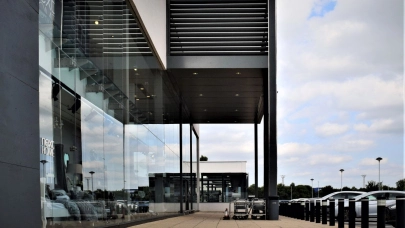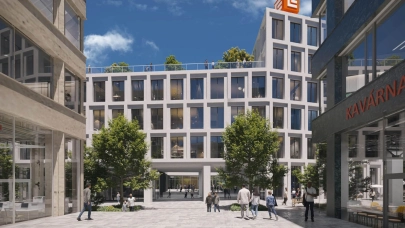
Q1 2024 retail data has revealed that the difficult period of the coronavirus pandemic and the unfavourable economic situation of last year is over in the Czech retail market. In its analysis of the Shopping Center Index, CBRE has looked back at the 2023 performance of regional shopping centres.
Compared to the pre-pandemic year 2019, the development of the dynamics of shopping centre traffic showed slight progress. In a year-on-year comparison, this was an improvement of 4%, corresponding to the pan-European average. "Czechs continue going to the shopping centres most often to buy food, even several times a week. Another reason is to visit a fast food, restaurant or cafe in a food court or buy clothes, shoes and accessories," explains Aleš Nečas, Head of Retail Leasing Department at CBRE.
Compared to 2019, shopping centre turnover improved by up to 16%, however, inflation was the main contributor (as elsewhere in Europe). "Exceptional performances were achieved by the services sector, which improved by 21% year-on-year and by 68% compared to 2019. Travel agencies, nail studios and barbershops played a key role in this. The growth of the gastronomy sector also continued the following year. Its turnover increased by 12% year-on-year and up to 28% compared to 2019. Customers were mainly interested in refreshing drinks, Asian cuisine and international fast food chains," says Klára Bejblová, Expert on Retail Consultancy Market Research for the Czech Republic and the European region at CBRE. On the contrary, three out of nine sectors recorded a year-on-year decrease in turnover: fashion, sports goods, and household equipment and furniture.
The vacancy rate of regional shopping centres has still not returned to the level of 2019. As in the rest of Europe, the highest vacancy rate (around 5.2%) is achieved in regional centres with a high share of leisure activities. The overall area continues to be dominated by fashion at 36%, followed by speciality retail at 14% and the sports category at 12%.
The electronics sector (+17%) and services (+10%) recorded the strongest year-on-year growth in average rent. On the contrary, the categories of specialised food, household equipment and furniture, and fashion, achieved a below-average increase.
The start of 2024 has brought some optimism to the retail market. Closed data for the first three months indicate an upward trend for almost all monitored indicators. Attendance increased by 4% year-on-year, average rents increased by 3% and turnover increased by 6%. The only indicator showing a deterioration so far was the vacancy rate, which rose slightly to 4.4%.
The positive mood is evident even among the retailers themselves. “The results of the reasoning show that 57% of respondents plan to expand their retail network in terms of the number of stores; on the contrary, 30% of them intend to reduce the average size of units. Segments that have achieved very good year-on-year sales plan to increase the portfolio. However, even 56% of the surveyed brands from the fashion sector, which fell year-on-year last year, are not reluctant to expand," comments Jan Janáček, head of the retail sector and retail leasing department at CBRE.
In terms of preferred locations for expansion, regional business centres with a larger catchment area are still popular. The popularity of retail parks is also growing in the long term, even among retailers who have not sought this type of real estate in the past. Retailers are most concerned this year about labour shortages (42% of respondents said), rapidly rising wages and rent costs, as well as the slow pace of sales recovery.



